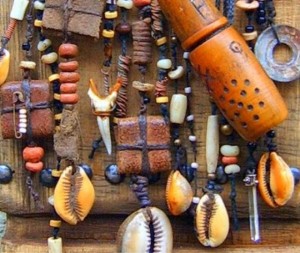Studying indigenous African religions?
In a beautiful essay for the New York Times, author Anna Badken travels to Djenne in the Sahel, the narrow band of semi-arid land south of the Sahara, to talk to a marabout, a kind of sorcerer and Muslim jurist. She wants him to make sure her friend in Texas can get pregnant using in-vitro fertilization.
Sounds kind of strange. But Badken takes us into a world where magic has meaning. She says that might because the Sahel is so merciless.
It is warrened with graves of children. Children here die of disease and hunger at one of the highest rates in the world. A walk through the Sahel is a walk through a world flicking endlessly between unfathomable cruelty and unaccountable kindness.
She suggests that maybe “that’s why people here revert to magic. Perhaps sorcery is necessary to level with this land, to live and walk in the bush of ghosts.”
Her sorcerer gave her a piece of paper with writing on it and told her to get an amulet, a gris-gris made for it. Her friend should wear until she gave birth.
Badken notes that her socerer did not question her about in vitro fertilization. “That to me seemed pretty magical,” she notes. “He embraced my cultural context, and to refuse the gris-gris would have been to disrespect his.”
Badken was in the Sahel researching a book, Walking with Abel: Journeys with the Nomads of the African Savannah and was clearly enchanted by her marabout.
Some poets believe that a sense of wonderment is essential to being alive. “Before us, our first task is to astonish, and then, harder by far, to be astonished,” ends a Galway Kinnell poem. Time and again the Sahel forced me to reckon with the astonishment of the supernatural.













